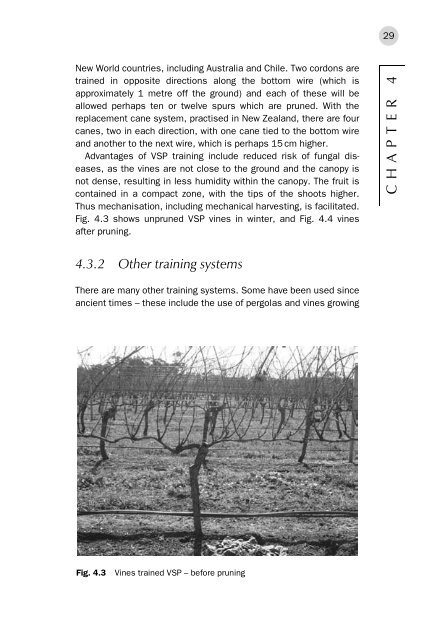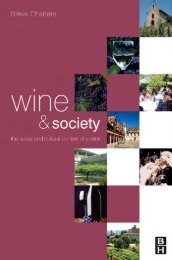Wine Production : Vine to Bottle - Vinum Vine
Wine Production : Vine to Bottle - Vinum Vine
Wine Production : Vine to Bottle - Vinum Vine
Create successful ePaper yourself
Turn your PDF publications into a flip-book with our unique Google optimized e-Paper software.
29<br />
New World countries, including Australia and Chile. Two cordons are<br />
trained in opposite directions along the bot<strong>to</strong>m wire (which is<br />
approximately 1 metre off the ground) and each of these will be<br />
allowed perhaps ten or twelve spurs which are pruned. With the<br />
replacement cane system, practised in New Zealand, there are four<br />
canes, two in each direction, with one cane tied <strong>to</strong> the bot<strong>to</strong>m wire<br />
and another <strong>to</strong> the next wire, which is perhaps 15 cm higher.<br />
Advantages of VSP training include reduced risk of fungal diseases,<br />
as the vines are not close <strong>to</strong> the ground and the canopy is<br />
not dense, resulting in less humidity within the canopy. The fruit is<br />
contained in a compact zone, with the tips of the shoots higher.<br />
Thus mechanisation, including mechanical harvesting, is facilitated.<br />
Fig. 4.3 shows unpruned VSP vines in winter, and Fig. 4.4 vines<br />
after pruning.<br />
CHAPTER 4<br />
4.3.2 Other training systems<br />
There are many other training systems. Some have been used since<br />
ancient times – these include the use of pergolas and vines growing<br />
Fig. 4.3<br />
<strong>Vine</strong>s trained VSP – before pruning
















